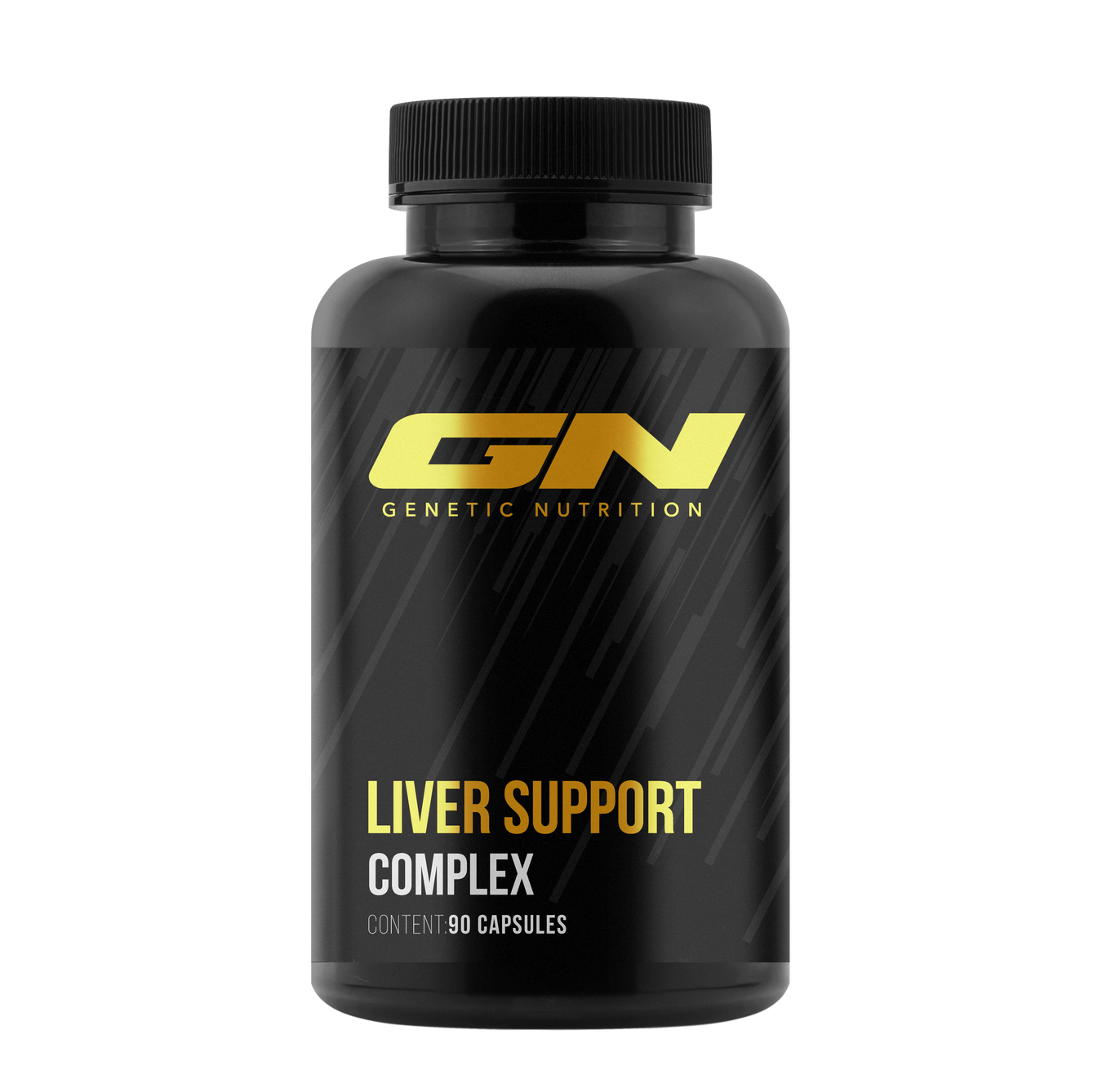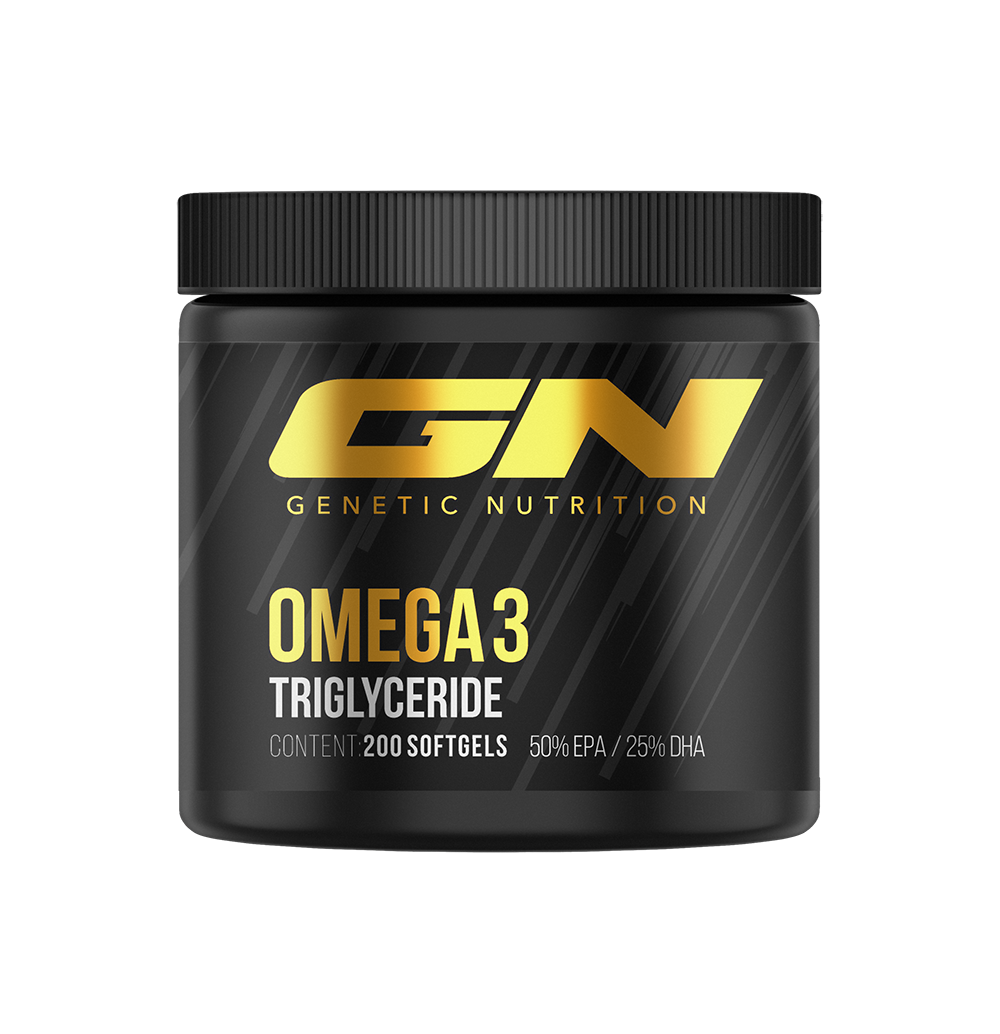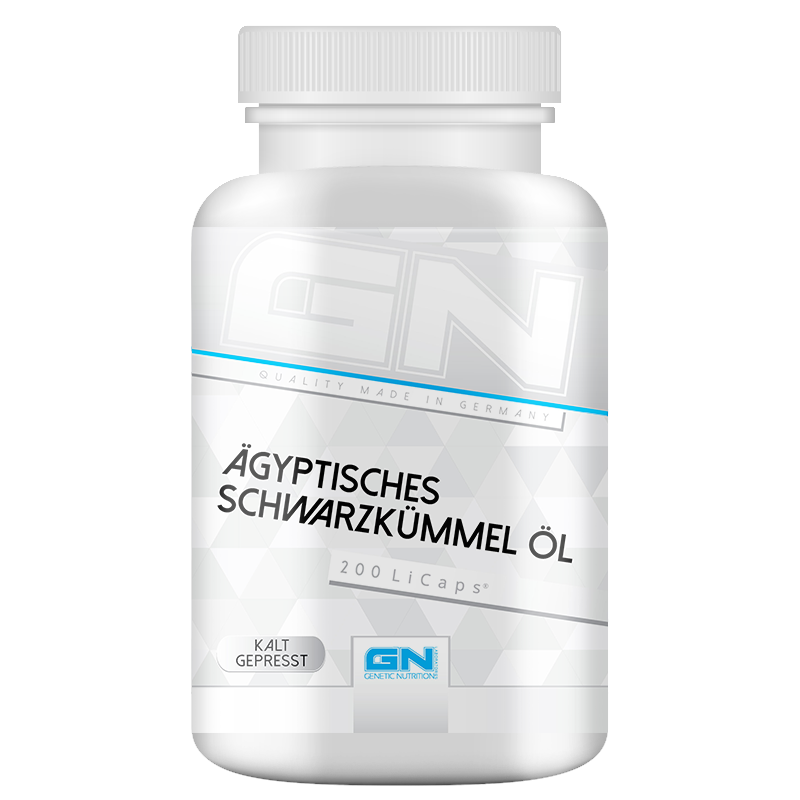Fatty acids
Filters
-
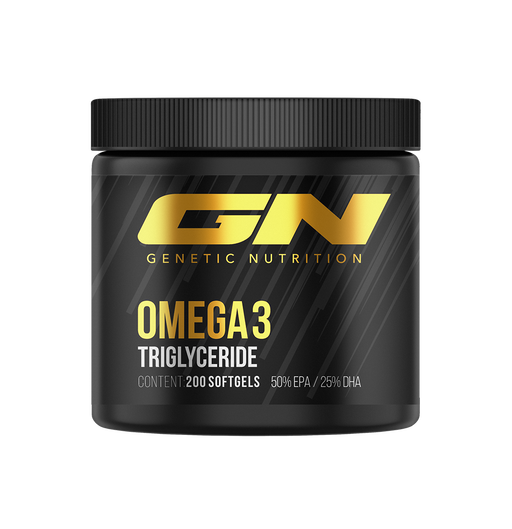 Save 11%
Save %
Original price €29,90Original price €29,90 - Original price €29,90Original price €29,90Current price €26,61€26,61 - €26,61Current price €26,61| /
Save 11%
Save %
Original price €29,90Original price €29,90 - Original price €29,90Original price €29,90Current price €26,61€26,61 - €26,61Current price €26,61| /Triglyceride Omega 3 Sport Edition · 200 softgels
GN Laboratories77 reviewsOmega-3 fatty acids are one of the supplements that are mentioned first when it comes to determining the most important dietary supplements. Once y...
View full detailsOriginal price €29,90Original price €29,90 - Original price €29,90Original price €29,90Current price €26,61€26,61 - €26,61Current price €26,61| /Save 11% Save % -
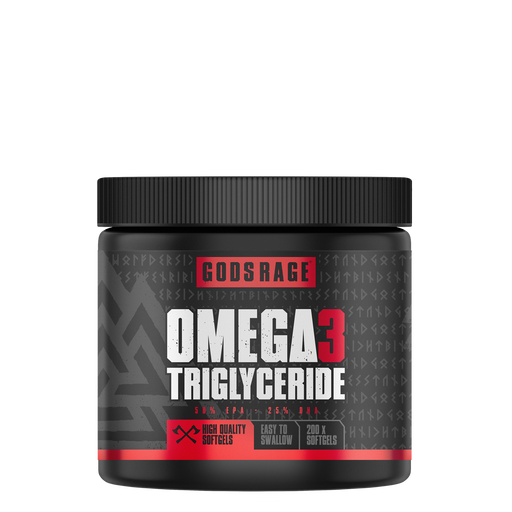 Save 17%
Save %
Original price €29,90Original price €29,90 - Original price €29,90Original price €29,90Current price €24,90€24,90 - €24,90Current price €24,90| /
Save 17%
Save %
Original price €29,90Original price €29,90 - Original price €29,90Original price €29,90Current price €24,90€24,90 - €24,90Current price €24,90| /Omega 3 Triglycerides · 200 Softgels
Gods Rage27 reviewsOmega-3 fatty acids have numerous benefits for your health. They have a positive effect on the heart, brain and eyesight, helping your body to func...
View full detailsOriginal price €29,90Original price €29,90 - Original price €29,90Original price €29,90Current price €24,90€24,90 - €24,90Current price €24,90| /Save 17% Save % -
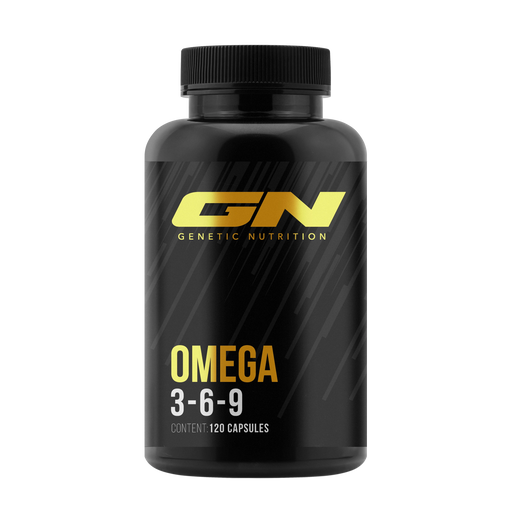 Save 11%
Save %
Original price €19,90Original price €19,90 - Original price €19,90Original price €19,90Current price €17,71€17,71 - €17,71Current price €17,71| /
Save 11%
Save %
Original price €19,90Original price €19,90 - Original price €19,90Original price €19,90Current price €17,71€17,71 - €17,71Current price €17,71| /Omega 3-6-9 · 120 capsules
GN Laboratories5 reviewsEveryone is familiar withomega-3 fatty acids as a supplement, but these are not the only fatty acids that the body needs for a whole range of impor...
View full detailsOriginal price €19,90Original price €19,90 - Original price €19,90Original price €19,90Current price €17,71€17,71 - €17,71Current price €17,71| /Save 11% Save % -
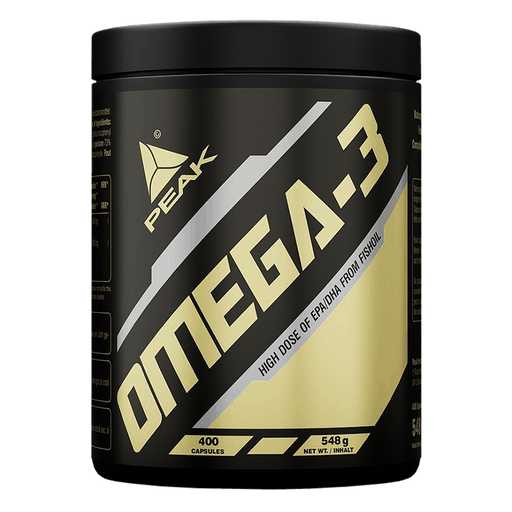 Save 11%
Save %
Original price €32,90Original price €32,90 - Original price €32,90Original price €32,90Current price €29,28€29,28 - €29,28Current price €29,28| /
Save 11%
Save %
Original price €32,90Original price €32,90 - Original price €32,90Original price €32,90Current price €29,28€29,28 - €29,28Current price €29,28| /Omega 3 · 400 capsules
PEAK3 reviewsHigh-quality (marine) fish oil in easy-to-swallow softgel capsules Uncomplicated intake of vital omega-3 fatty acids Proven effective thanks to hi...
View full detailsOriginal price €32,90Original price €32,90 - Original price €32,90Original price €32,90Current price €29,28€29,28 - €29,28Current price €29,28| /Save 11% Save % -
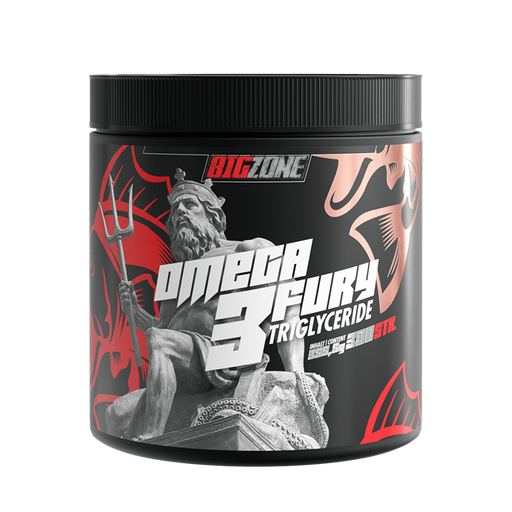 Save 11%
Save %
Original price €44,90Original price €44,90 - Original price €44,90Original price €44,90Current price €39,96€39,96 - €39,96Current price €39,96| /
Save 11%
Save %
Original price €44,90Original price €44,90 - Original price €44,90Original price €44,90Current price €39,96€39,96 - €39,96Current price €39,96| /Omega 3 Fury Triglyceride · 300 capsules
Big Zone7 reviewsfor the immune system for the production of hormones for protein synthesis for the joints against inflammation for the retina in the eye against c...
View full detailsOriginal price €44,90Original price €44,90 - Original price €44,90Original price €44,90Current price €39,96€39,96 - €39,96Current price €39,96| /Save 11% Save % -
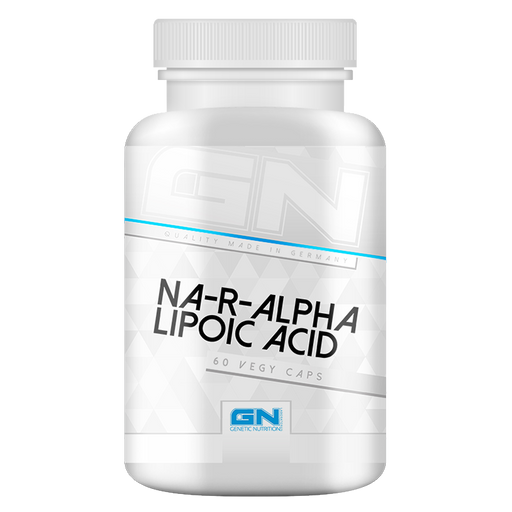 Save 20%
Save %
Original price €24,90Original price €24,90 - Original price €24,90Original price €24,90Current price €19,90€19,90 - €19,90Current price €19,90| /
Save 20%
Save %
Original price €24,90Original price €24,90 - Original price €24,90Original price €24,90Current price €19,90€19,90 - €19,90Current price €19,90| /NA-R-Alpha Lipoic Acid · 60 capsules
GN Laboratories7 reviewsAlpha lipoic acid in its most potent form for antioxidant protection, increased energy, faster post-workout recovery, healthy blood sugar levels an...
View full detailsOriginal price €24,90Original price €24,90 - Original price €24,90Original price €24,90Current price €19,90€19,90 - €19,90Current price €19,90| /Save 20% Save % -
 Save 11%
Save %
Original price €23,90Original price €23,90 - Original price €23,90Original price €23,90Current price €21,27€21,27 - €21,27Current price €21,27| /
Save 11%
Save %
Original price €23,90Original price €23,90 - Original price €23,90Original price €23,90Current price €21,27€21,27 - €21,27Current price €21,27| /Omega 3 Fury Triglyceride · 120 capsules
Big Zone3 reviewsBut what exactly are omega 3 fatty acids needed for? for the immune system for the production of hormones for protein synthesis for the joints aga...
View full detailsOriginal price €23,90Original price €23,90 - Original price €23,90Original price €23,90Current price €21,27€21,27 - €21,27Current price €21,27| /Save 11% Save % -
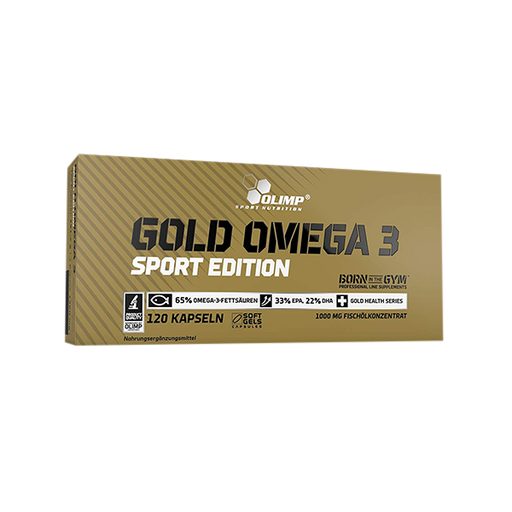 Save 11%
Save %
Original price €17,90Original price €17,90 - Original price €17,90Original price €17,90Current price €15,93€15,93 - €15,93Current price €15,93| /
Save 11%
Save %
Original price €17,90Original price €17,90 - Original price €17,90Original price €17,90Current price €15,93€15,93 - €15,93Current price €15,93| /Gold Omega 3 Sport Edition · 120 capsules
Olimp Sport Nutrition3 reviewsHigh quality food supplementOlimp Gold Omega 3 Sport Edition with essential omega-3 fatty acids. Omega-3 rich: 65% EPA and DHA from cold-water ...
View full detailsOriginal price €17,90Original price €17,90 - Original price €17,90Original price €17,90Current price €15,93€15,93 - €15,93Current price €15,93| /Save 11% Save % -
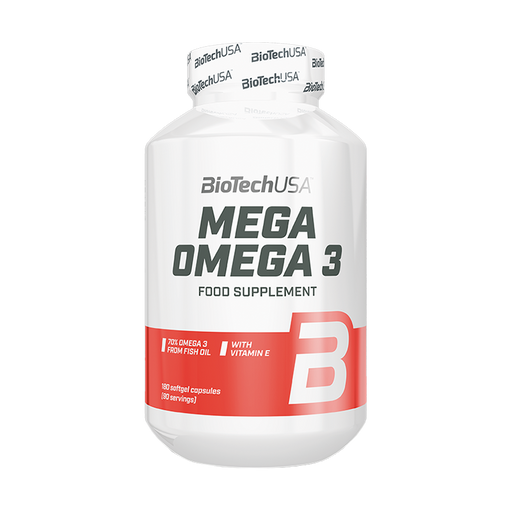 Save 11%
Save %
Original price €21,90Original price €21,90 - Original price €21,90Original price €21,90Current price €19,49€19,49 - €19,49Current price €19,49| /
Save 11%
Save %
Original price €21,90Original price €21,90 - Original price €21,90Original price €21,90Current price €19,49€19,49 - €19,49Current price €19,49| /Mega Omega 3 · 180 capsules
Biotech USANo reviews1000 mg fish oil per serving With 70% EPA and DHA omega-3 fatty acid content With added vitamin E Softgel capsule form
Original price €21,90Original price €21,90 - Original price €21,90Original price €21,90Current price €19,49€19,49 - €19,49Current price €19,49| /Save 11% Save % -
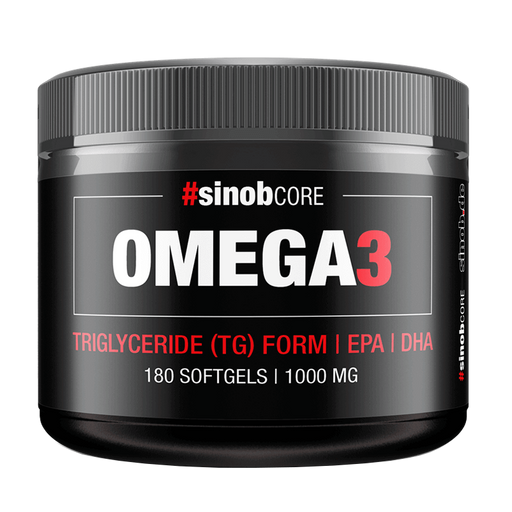 Save 11%
Save %
Original price €15,90Original price €15,90 - Original price €15,90Original price €15,90Current price €14,15€14,15 - €14,15Current price €14,15| /
Save 11%
Save %
Original price €15,90Original price €15,90 - Original price €15,90Original price €15,90Current price €14,15€14,15 - €14,15Current price €14,15| /Core Omega 3 · 180 Softgels
#sinob2 reviewsHealth of sea fishFatty sea fish such as salmon is healthy, but often contaminated with harmful substances and expensive. Omega-3 fatty acids: ...
View full detailsOriginal price €15,90Original price €15,90 - Original price €15,90Original price €15,90Current price €14,15€14,15 - €14,15Current price €14,15| /Save 11% Save % -
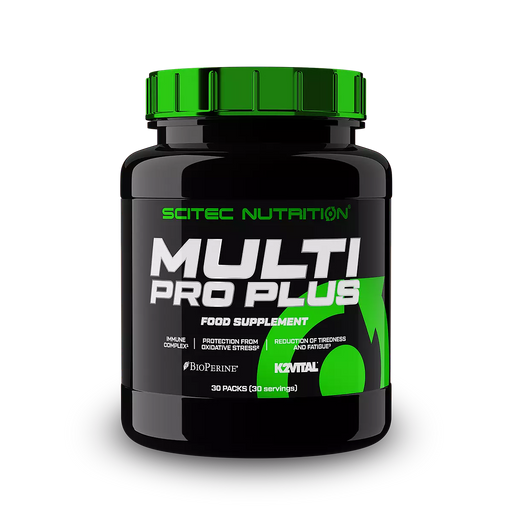 Save 11%
Save %
Original price €25,90Original price €25,90 - Original price €25,90Original price €25,90Current price €23,05€23,05 - €23,05Current price €23,05| /
Save 11%
Save %
Original price €25,90Original price €25,90 - Original price €25,90Original price €25,90Current price €23,05€23,05 - €23,05Current price €23,05| /Multi-Pro Plus · 30 Packets
SCITEC Nutrition2 reviewsMULTI PRO is a professional multivitamin & mineral formula in a package of six tablets/capsules. Vitamins and minerals are very basic nutrient...
View full detailsOriginal price €25,90Original price €25,90 - Original price €25,90Original price €25,90Current price €23,05€23,05 - €23,05Current price €23,05| /Save 11% Save % -
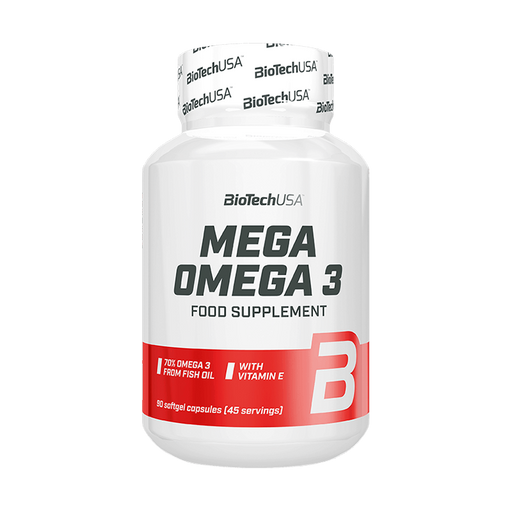 Save 11%
Save %
Original price €12,90Original price €12,90 - Original price €12,90Original price €12,90Current price €11,48€11,48 - €11,48Current price €11,48| /
Save 11%
Save %
Original price €12,90Original price €12,90 - Original price €12,90Original price €12,90Current price €11,48€11,48 - €11,48Current price €11,48| /Mega Omega 3 · 90 capsules
Biotech USA1 reviewSoftgel capsules contain omega-3 fatty acid from fish oil One serving contains 1000 mg fish oil, 400 mg EPA and 300 mg DHA EPA and DHA contribute ...
View full detailsOriginal price €12,90Original price €12,90 - Original price €12,90Original price €12,90Current price €11,48€11,48 - €11,48Current price €11,48| /Save 11% Save % -
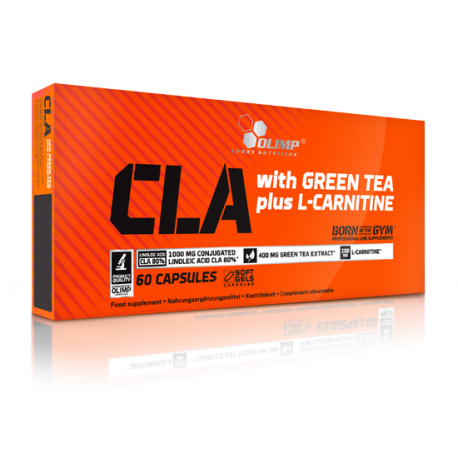 Save 11%
Save %
Original price €24,90Original price €24,90 - Original price €24,90Original price €24,90Current price €22,16€22,16 - €22,16Current price €22,16| /
Save 11%
Save %
Original price €24,90Original price €24,90 - Original price €24,90Original price €24,90Current price €22,16€22,16 - €22,16Current price €22,16| /CLA & Green Tea Plus L-Carnitine · 60 capsules
Olimp Sport NutritionNo reviewsOlimp CLA & Green Tea Plus L-Carnitine supports fat loss. The combination of CLA, green tea and L-carnitine accelerates the fat loss process. ...
View full detailsOriginal price €24,90Original price €24,90 - Original price €24,90Original price €24,90Current price €22,16€22,16 - €22,16Current price €22,16| /Save 11% Save % -
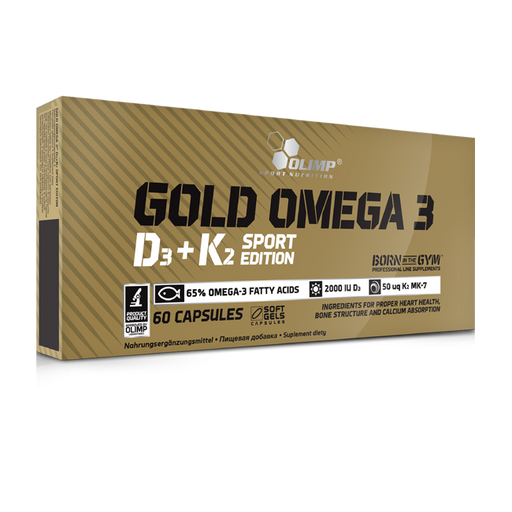 Save 11%
Save %
Original price €19,90Original price €19,90 - Original price €19,90Original price €19,90Current price €17,71€17,71 - €17,71Current price €17,71| /
Save 11%
Save %
Original price €19,90Original price €19,90 - Original price €19,90Original price €19,90Current price €17,71€17,71 - €17,71Current price €17,71| /Gold Omega 3 D3+K2 Sport Edition · 60 capsules
Olimp Sport NutritionNo reviewsproductGold Omega 3 D3+K2 Sport Edition - rich food supplement with omega-3, vitamin D3 and K2. Omega-3: Obtained from cold-water fish, support...
View full detailsOriginal price €19,90Original price €19,90 - Original price €19,90Original price €19,90Current price €17,71€17,71 - €17,71Current price €17,71| /Save 11% Save % -
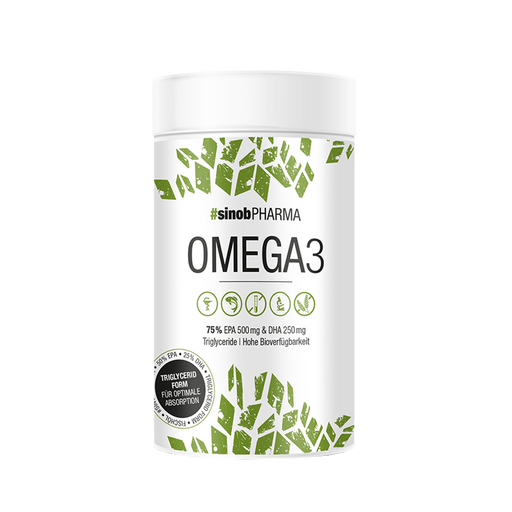 Save 11%
Save %
Original price €24,90Original price €24,90 - Original price €24,90Original price €24,90Current price €22,16€22,16 - €22,16Current price €22,16| /
Save 11%
Save %
Original price €24,90Original price €24,90 - Original price €24,90Original price €24,90Current price €22,16€22,16 - €22,16Current price €22,16| /Omega-3 MAX · 120 Liquid Caps
#sinob1 review#sinob Omega 3 capsules for health and well-being. Omega 3 in natural triglyceride form, without vitamin E. High content of 50% EPA and 25% DHA fo...
View full detailsOriginal price €24,90Original price €24,90 - Original price €24,90Original price €24,90Current price €22,16€22,16 - €22,16Current price €22,16| /Save 11% Save % -
 Save 11%
Save %
Original price €26,90Original price €26,90 - Original price €26,90Original price €26,90Current price €23,94€23,94 - €23,94Current price €23,94| /
Save 11%
Save %
Original price €26,90Original price €26,90 - Original price €26,90Original price €26,90Current price €23,94€23,94 - €23,94Current price €23,94| /ALA 200 · 120 capsules
Olimp Sport Nutrition1 reviewFood supplement with alpha-lipoic acid Improvement of energy production Protection against the negative effects of oxidation Antioxidant effect Su...
View full detailsOriginal price €26,90Original price €26,90 - Original price €26,90Original price €26,90Current price €23,94€23,94 - €23,94Current price €23,94| /Save 11% Save % -
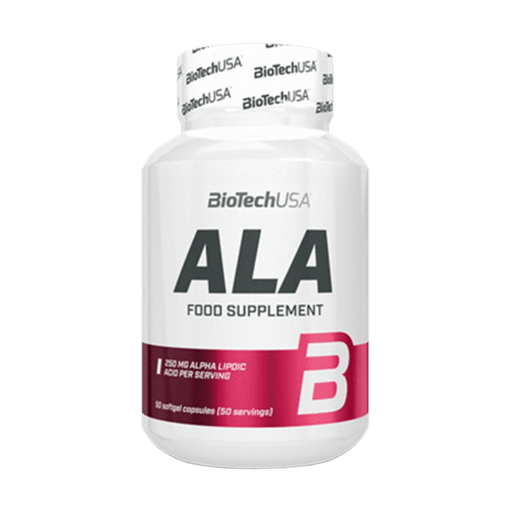 Save 11%
Save %
Original price €9,90Original price €9,90 - Original price €9,90Original price €9,90Current price €8,81€8,81 - €8,81Current price €8,81| /
Save 11%
Save %
Original price €9,90Original price €9,90 - Original price €9,90Original price €9,90Current price €8,81€8,81 - €8,81Current price €8,81| /ALA · 50 capsules
Biotech USANo reviewsAlpha lipoic acid is a vitamin-like antioxidant It dissolves in both fat and water and acts throughout the body A daily dose of 200-300 mg is reco...
View full detailsOriginal price €9,90Original price €9,90 - Original price €9,90Original price €9,90Current price €8,81€8,81 - €8,81Current price €8,81| /Save 11% Save % -
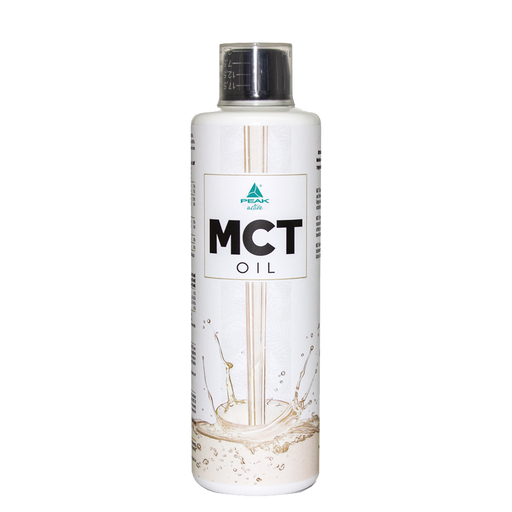 Save 0%
Save %
Original price €14,90 - Original price €14,90Original price €14,90€14,90€14,90 - €14,90Current price €14,90| /
Save 0%
Save %
Original price €14,90 - Original price €14,90Original price €14,90€14,90€14,90 - €14,90Current price €14,90| /MCT Oil · 500ml
PEAK1 reviewMCT oil with 98% medium-chain triglycerides for effective energy. Versatile use: cooking, baking, sautéing. Ideal as a dietary energy source due t...
View full detailsOriginal price €14,90 - Original price €14,90Original price €14,90€14,90€14,90 - €14,90Current price €14,90| /Save 0% Save % -
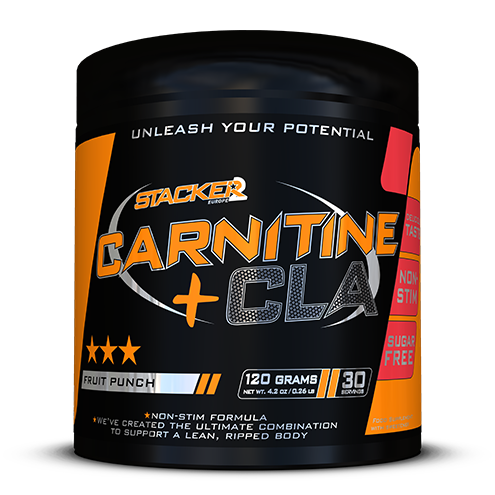 Save 0%
Save %
Original price €24,90 - Original price €24,90Original price €24,90€24,90€24,90 - €24,90Current price €24,90| /
Save 0%
Save %
Original price €24,90 - Original price €24,90Original price €24,90€24,90€24,90 - €24,90Current price €24,90| /Carnitine + CLA · 120g
Stacker 22 reviewsL-carnitine and CLA are key elements in fatty acid metabolism. L-carnitine transports fatty acids to the mitochondria for energy production. CLA ...
View full detailsOriginal price €24,90 - Original price €24,90Original price €24,90€24,90€24,90 - €24,90Current price €24,90| /Save 0% Save % -
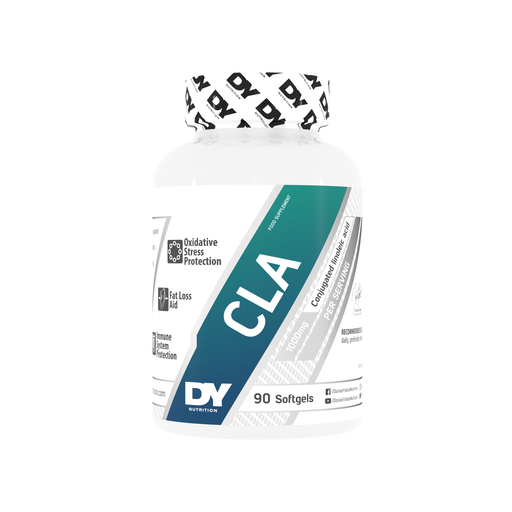 Save 11%
Save %
Original price €17,90Original price €17,90 - Original price €17,90Original price €17,90Current price €15,93€15,93 - €15,93Current price €15,93| /
Save 11%
Save %
Original price €17,90Original price €17,90 - Original price €17,90Original price €17,90Current price €15,93€15,93 - €15,93Current price €15,93| /CLA · 90 softgels
DY NutritionNo reviewsCLA effectively supports fat loss and is proven by empirical evidence. Extracted from safflower plants, provides 1000mg of modified omega-6 fatty...
View full detailsOriginal price €17,90Original price €17,90 - Original price €17,90Original price €17,90Current price €15,93€15,93 - €15,93Current price €15,93| /Save 11% Save % -
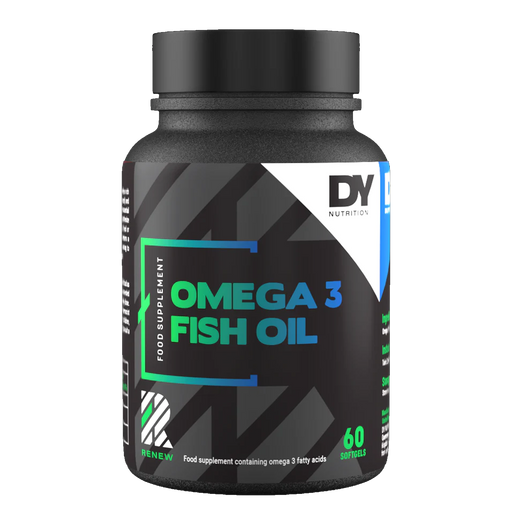 Save 11%
Save %
Original price €16,90Original price €16,90 - Original price €16,90Original price €16,90Current price €15,04€15,04 - €15,04Current price €15,04| /
Save 11%
Save %
Original price €16,90Original price €16,90 - Original price €16,90Original price €16,90Current price €15,04€15,04 - €15,04Current price €15,04| /Omega-3 Fish Oil · 60 Softgels
DY Nutrition1 reviewHigh-dose omega-3 fatty acidsProvides 330mg EPA and 220mg DHA per softgel to support brain, heart and eye health. Quality and Purity: Advanced ...
View full detailsOriginal price €16,90Original price €16,90 - Original price €16,90Original price €16,90Current price €15,04€15,04 - €15,04Current price €15,04| /Save 11% Save %
What are fatty acids?
Fatty acids, which are classified as lipids, are aliphatic monocarboxylic acids and depending on their double bonds it is decided whether they are omega 3 or omega 6 fatty acids. Fatty acids are also components of fats and oils and can have a positive or negative effect on our health. This depends on whether good or bad fats are consumed.
What is the difference between saturated and unsaturated fatty acids?
Saturated fatty acids
A saturated fatty acid is a fatty acid that does not have a double bond between C atoms. These fatty acids are particularly common in meat and dairy products such as whole milk, cheese, butter and cream. They are also often found in baked goods such as pizza and cakes. So when we talk about "bad" fatty acids, we are mainly referring to animal fats. They are bad because excessive consumption increases the risk of arteriosclerosis and contributes to an increase in LDL cholesterol, which is harmful to health.
Unsaturated fatty acids
Unsaturated fatty acids have at least one C=C double bond, polyunsaturated fatty acids have two or more bonds between the carbon atoms and the chain. Some of the unsaturated fatty acids are essential for the body, as they cannot be synthesized by the body in the conventional way. Unsaturated fatty acids are contained in olive oil, rapeseed oil, avocados and nuts, for example.
Why do I need fatty acids as an athlete?
Fatty acids perform two elementary tasks for us: they enable the utilization of fat-soluble vitamins and help to build up hormones. Fatty acids help to ensure that vitamins A, D, E and K can be absorbed by the body. The "good" fats serve, among other things, to build up the brain, the conductivity of the nerves, cell structure and the production of the body's own messenger substances.
Omega 3 fatty acids in particular are essential for the human body, as they have many positive effects. These include positive effects on the metabolism and athletic performance. Sport can be carried out for longer and the regeneration time is reduced. Omega 3 also supports fat burning and muscle building. Omega 3 fatty acid is also said to have a wound-healing effect, so it supports the healing process in the case of micro-injuries, such as those caused by sore muscles.
Compared to other nutrients, fats contain the highest energy density (1g fat = 9 kcal, 1g glucose/protein: 4 kcal) and are therefore an important source of energy for sporting activities. However, they have the disadvantage that they burn more oxygen during combustion and require twice as much time as aerobic glucose breakdown. However, this has no effect during low to medium intensity exercise, as there is sufficient oxygen available. At rest, the proportion of energy provided by fats and carbohydrates is 50% each.
Aerobic endurance training can improve the ability to burn fat (fatty acid transport, b -oxidation), so that well-trained endurance athletes can use fats not only as a second source of energy, but under certain conditions even as an equivalent source. For this reason, the amount of trigycerides (fats) in endurance-trained muscle fibers is approximately two and a half times greater than in non-endurance-trained muscle fibers. During predominantly aerobic endurance activities, fatty acids can be increasingly used to generate energy and thus conserve glycogen stores - e.g. for the final spurt.
Competitive athletes in particular are careful to eat a low-fat diet, as too much fat in the diet has a negative effect on performance (especially endurance performance). This is probably due to the disruption of carbohydrate metabolism at various levels. In addition, with a high fat content in the diet, fewer carbohydrates and proteins can be absorbed. It has been observed that a lower body weight indirectly means an improvement in maximum endurance performance. This is because the lower the body weight, the higher the maximum relative oxygen uptake capacity per kg of body weight - without additional training. By increasing the fat-free body mass, you can therefore increase the possible intensity (e.g. speed) of your endurance performance.
With a normal balanced diet, however, it is not exactly easy to eat a low-fat diet, as only around a third of fats are consumed as "visible fats" (vegetable oils, butter or margarine as spreadable fat, visible fat in meat or sausage). The majority are hidden fats, some of which are not perceived directly, e.g. the fat in baked goods, pastries (e.g. pasta), dairy products (especially the very fatty cheeses) and in sweets (chocolate has 30% fat). It is not easy and requires a strong will to eat only low-fat foods in the long term. This is because aromas, flavors and fragrances are bound to fat and only develop their effect with it. Without fat, food no longer smells or tastes particularly intense.
How should I dose my intake of fatty acids?
Nutrition experts advise strength athletes to cover up to 35% of their calorie requirements with fat, while endurance athletes should consume 20-25%. However, the exact dosage depends on age, physical condition and activity. In addition, requirements and supply are determined by the ratio of omega 3 to omega 6 fatty acids. According to the nutrition report of the German Nutrition Society (DGE), an optimal omega-3 to omega-6 ratio should be a maximum of 1:5.
| Type of oil | saturated fatty acids | monounsaturated fatty acids | Polyunsaturated fatty acids Content | of which linoleic acid (omega-6 fatty acid) | of which linolenic acid (omega-3 fatty acid) |
|---|---|---|---|---|---|
| Linseed oil | 10 | 18 | 72 | 14 | 58 |
| Rapeseed oil | 13 | 56 | 31 | 19 | 9 |
| Walnut oil | 10 | 16 | 74 | 61 | 9 |
| Soybean oil | 15 | 21 | 64 | 56 | 8 |
| Olive oil | 15 | 74 | 11 | 10 | 1 |
| Maize germ oil | 15 | 33 | 52 | 51 | 1 |
| Sunflower oil | 12 | 24 | 64 | ^63 | 1 |
| Safflower oil | 10 | 13 | 77 | 76 | 1 |
| Peanut oil | 19 | 37 | 44 | 42 | - |
The importance of fats for the body
With an energy density of 38.1 kJ/g (= 9.1 kcal/g), fat is the most important source of energy. Like carbohydrates, fats consist of the elementary building blocks carbon (C), hydrogen (H) and oxygen (O); in contrast to proteins, they have no nitrogen content (N). Dietary fats are primarily triglycerides and cholesterol. Triglycerides, also known as neutral fats, make up the majority of all dietary fats and consist of glycerol, a trivalent alcohol, and fatty acids, whereby three fatty acids are attached to one molecule of glycerol by esterification.
They are the storage fat that fills up the body's stores and can also be seen in vegetable oil or pieces of meat. Each of these fats is characterized by a different fatty acid composition. Fatty acids are organic acids (hydrocarbon compounds) that can be divided into short-chain and long-chain fatty acids based on the length of the carbon chain. The longer the fatty acid chains in a fat, the more difficult it is to digest or melt. On the other hand, the number of double bonds in the fatty acid chain is used to differentiate between saturated fatty acids, which have no double bonds (e.g. stearic acid, palmitic acid), and monounsaturated or polyunsaturated fatty acids with one (e.g. oleic acid) or more (e.g. linoleic acid) double bonds.
As the number of double bonds increases, so does the reactivity of the substance, as not all of the binding possibilities are utilized. This is also the reason why fats with a high proportion of reactive unsaturated fatty acids spoil more quickly. The following applies to the human body: the inert saturated fatty acids usually migrate directly into the depots, while the more reactive unsaturated fatty acids are preferentially used in organic building processes.
Some of the unsaturated fatty acids, such as linoleic acid and linolenic acid, cannot be synthesized by the human organism itself and must therefore be supplied with food; these are then referred to as essential fatty acids. The body is able to synthesize the most important unsaturated fatty acid of all from these two: the quadruply unsaturated arachidonic acid. It is a component of almost all cell membranes and is also the starting substance for a number of important mediators with a variety of effects, including on the blood and circulation and as a mediator of certain hormone effects ("second messenger").
Origin of fats
Fats in our food are of various origins:
Animal origin
Meat and meat products, eggs and dairy products such as butter, cheese, milk and cream are the main sources of animal fats in Europe.
Vegetable origin
Fat can be found in plant seeds (e.g. rapeseed, sunflower, corn), in fruits (e.g. olives, avocado) and in nuts (e.g. peanuts, almonds). The oil is obtained by washing and grinding the seeds, fruits or nuts. During the heating process, the oil can be separated through an extraction process. It is then refined to remove unwanted flavors, odors, colors and impurities. Some oils such as cold-pressed olive oil, walnut oil and grape seed oil are pressed directly from the seed or fruit without any further refining process.
The main supply for the European oil market comes from:
- Annual oil crops, for example rapeseed, sunflower, soybean, corn and peanuts.
- Tree fruits such as olive, palm, cocoa and coconut.
Fats can be found naturally in foods such as fatty meats, oily fish, egg yolks, cheese, full and semi-skimmed milk or added during food preparation. This can be done at home or by the food manufacturer, for example in the production of cakes, cookies, pastries, savory snacks, meat products or mayonnaise. Oils and fats can be clearly visible in foods (e.g. baking and salad oil, butter, other spreads, cream and the visible fat on meat) or mixed with other components and therefore less obvious to the consumer. Around 70 percent of the average fat intake comes from so-called "hidden" fats. Knowing about fats and reading food labels can make an important contribution to a healthy and balanced diet.
Fat structure
To understand the role of fats in our health and in food production, it is important to understand the chemistry of fats. Over 90 percent of the fats in food and in the body are triglycerides. Cholesterol, waxes and phospholipids share the remaining ten percent.
Triglycerides
All triglycerides have a fork-like structure consisting of glycerol and three fatty acids.
Fatty acids
Fatty acids vary in the length of their carbon chain (from 4 to 22 building blocks) and in the number of double bonds. For example, butyric acid (C4:0), palmitic acid (C16:0) and arachidic acid (C20:0) contain 4, 16 and 20 carbon atoms in their chains respectively. Most fatty acids in our diet and our bodies contain 16 to 18 carbon atoms (see appendix: List of the most common fatty acids). Fatty acids are classified according to the number of double bonds they contain. Saturated fats contain none, monounsaturated fats contain one and polyunsaturated fats contain two or more double bonds.
Omega-6 and omega-3 fatty acids
Polyunsaturated fatty acids are further divided into two families depending on the position of the first double bond:
- Omega-6 (or n-6) fatty acids have the first double bond at the sixth carbon atom along the fatty acid chain and are derived primarily from linoleic acid.
- Omega-3 (or n-3) fatty acids have the first double bond on the third carbon atom along the fatty acid chain and are mainly derived from alpha-linolenic acid.
In addition to their actual name, fatty acids are often represented by an abbreviated numerical name based on the number of carbon atoms, the number of double bonds and the associated omega class. For example, linoleic acid is abbreviated to C18:2 n-6. This indicates that linoleic acid has 18 carbon atoms and two double bonds and belongs to the n-6 or omega-6 family. Alpha-linolenic acid is abbreviated as C18:3 n-3: it has 18 carbon atoms, 3 double bonds and belongs to the n-3 or omega-3 family.
Essential fatty acids
The essential fatty acids linoleic acid (omega-6 fatty acid) and alpha-linolenic acid (omega-3 fatty acid) cannot be produced by the body and must therefore be ingested with food. They are important for growth, development and health. Even if the body cannot produce these two fatty acids, it can convert them into longer chain versions. These longer chain versions are the building blocks of eicosanoids, the precursors of some hormones (e.g. prostaglandins).
These hormone-like substances play a major role in the formation of cell membranes as well as in blood clotting, wound healing and inflammation. Although the body is able to convert alpha-linolenic acid to the long chain version EPA (eicosapentaenoic acid) and to a lesser extent to DHA (docosahexaenoic acid), this conversion appears to be limited. For this reason, we also need direct sources of these long-chain omega-3 fats in our diet. The richest source of these fatty acids is oily fish.
Cis and trans fatty acids
Unsaturated fatty acids can also be categorized as "cis" (bent form) or "trans" (straight form) depending on their molecular structure. Most unsaturated fatty acids in the diet exist in the cis form. In meat and milk from ruminants (e.g. beef, sheep) and in products with industrially modified oils that have undergone a hardening process - partial hydrogenation - a certain proportion of unsaturated fatty acids are present in the trans form.
Function in the body
Dietary fats are the number one source of energy due to their high energy density: fats provide more than twice as much energy as carbohydrates or proteins. However, the immediate energy requirement is usually covered by carbohydrates, as the burning of fat, known as lipolysis, is more costly for the body despite the higher energy gain. Any excess energy supplied by food is stored by the body in depots, so the unburned fats are stored by the body as depot fat and building fat. This form of energy storage saves a lot of weight and space. If, for example, a bird had stored its energy supply in carbohydrates instead of depot fat, it would not be able to take off from the ground.
During prolonged periods of hunger and starvation, the body draws on its energy reserves, the depot fats. Depending on external circumstances, these are replenished in "good times" in order to be prepared for bad times. During physical exertion, energy from carbohydrates is used first, followed by energy from the fat stores, although this only happens after around 30 minutes of continuous physical exertion. Fat burning is mainly activated during light endurance exercise, because the more intense the sporting activity, the greater the energy supply from the more quickly utilizable carbohydrates.
For all those who want to get rid of annoying fat reserves through sport, the following therefore applies: exercise for at least half an hour at a moderate intensity without interruption, only then do you start to get rid of those little pads! In addition to their role as a source of energy, dietary fats also ensure that the fat-soluble vitamins A, D, E and K can be absorbed in the body. Adding butter to carrot vegetables, for example, not only serves to develop the flavor, but also to improve the absorption of the vitamin A contained in the carrots. This also indicates another important property of fats. Most aroma and flavor substances are lipophilic, i.e. fat-soluble; cheese or other dairy products with a high fat content therefore taste better. Anyone who has ever followed a strict low-fat diet knows that a large part of the flavor has disappeared along with the fat.
Occurrence and function of fats in the human organism at a glance:
- In white adipose tissue: depot or storage fat and "hunger-proof" building fat
- In brown adipose tissue: thermoregulation
- Mechanical protection of organs e.g. kidney fat
- Skin protection against external influences
- Vehicle for the absorption of fat-soluble vitamins (A, D, E, K, provitamin carotene) as well as aromatic and flavoring substances
- Source of fatty acids, some of which are essential for building cells and cell membranes and for various metabolic processes. They control the absorption of fats from the intestine, regulate fat metabolism and help to reduce high cholesterol levels.
Fats and health
Coronary heart disease
Coronary heart disease is the leading cause of death among men and women in Europe (WHO Health Report, 2002). There are many risk factors associated with the development of coronary heart disease. These include: high blood pressure, smoking, lack of exercise, obesity, diabetes, hereditary predisposition and elevated blood lipid levels (cholesterol, LDL cholesterol, triglycerides). There is a link between diet and some of these factors, particularly blood lipid levels.
Effects of diet on blood lipid levels
Cholesterol
For most people, cholesterol-containing foods, such as eggs, shellfish and liver, have little effect on blood cholesterol levels. However, there are some people who react strongly to cholesterol in their diet. These people need to limit their cholesterol intake.
What is cholesterol?
Cholesterol is a fat-like substance that occurs naturally in all animal tissues, including the human body. A certain amount of cholesterol is used by the body to build cell membranes, produce sex hormones and bile acid. Bile acid helps the body absorb and digest fats. Too much cholesterol or triglycerides in the blood can cause heart and blood vessel diseases. Over three quarters of the cholesterol in the blood is produced by the body, the rest comes from food. Cholesterol is transported in the blood in the form of lipoproteins: Low density lipoproteins (LDL - low density lipoprotein) and high density lipoproteins (HDL - high density lipoprotein).
A high concentration of LDL cholesterol is a risk factor for coronary heart disease, so it is sometimes called "bad cholesterol". HDL cholesterol is associated with cholesterol breakdown and high concentrations are beneficial. Consequently, it is often called "beneficial cholesterol". The higher the HDL level, the lower the risk of heart disease. It therefore makes sense to eat foods that help to reduce LDL levels and maintain or increase HDL levels. Physical activity also increases HDL levels.
Saturated fats
The amount of saturated fat in the diet has a far greater effect on blood cholesterol levels than the amount of cholesterol-containing foods. There is evidence that saturated fat has the greatest influence on total blood cholesterol and LDL cholesterol levels. But there are differences in cholesterol raising effects among fatty acids. In general, the effects of fatty acids with medium chain lengths (for example lauric acid C12:0, myristic acid C14:0 and palmitic acid C16:0) are greater than those with longer chains.
Monounsaturated fats
There are many reports about how good it is to eat as little fat as possible. However, recent recommendations suggest that a moderate fat intake with an appropriate fat composition is a better way to control blood lipid levels and prevent long-term health problems, as consuming normal amounts of fat maintains HDL cholesterol, the "beneficial cholesterol". This also protects against an increase in blood triglycerides, which can occur when large amounts of carbohydrates are included in the diet to replace fat (diets with little or no fat are usually high in carbohydrates). Increased amounts of monounsaturated fatty acids in the diet can lower LDL cholesterol levels, although this effect is largely related to the displacement of saturated fats in the diet.
Polyunsaturated fats
The long-chain omega-3 fatty acids found in fish are known to protect against heart disease. In countries such as Japan, where people eat a lot of oily fish, the incidence of heart disease is correspondingly lower. Regular consumption of fish results in both a reduction in blood triglyceride levels and a lower blood clotting potential. The long-chain fatty acids in fish do not appear to have a beneficial effect on blood cholesterol; they are rather neutral in this respect.
Polyunsaturated omega-6 fatty acids have strong LDL cholesterol-reducing properties that help protect against heart disease. However, very large amounts of omega-6 polyunsaturated fatty acids can cause a reduction in good HDL cholesterol levels. For this reason, and because of concerns about possible harmful effects on LDL oxidation, excessive amounts of polyunsaturated fatty acids should not be consumed.
Trans fatty acids
There are particular concerns about high intakes of trans fatty acids. Trans fatty acids are converted in a similar way to saturated fats. However, there are still doubts as to whether their effect on heart health is comparable. Trans fatty acids not only increase LDL cholesterol in the same way as saturated fatty acids, but they also reduce the level of good HDL cholesterol. Trans fatty acids are found in some dairy products and in some partially hydrogenated fats used in bakery products such as cookies, cakes or pastries.
In addition to physical activity, diet plays a key role in the regulation of blood lipid levels. To prevent cardiovascular disease, it is recommended to maintain a moderate fat intake and a good balance between saturated and unsaturated fats in the diet. At least 1 to 2 fish meals per week are important to maintain a healthy level of long-chain omega-3 fatty acids.
Deficient supply
Excessive intake, especially of fats with a high proportion of saturated fatty acids, leads to obesity due to increased depot formation, which can have a variety of health consequences: Damage due to mechanical overload in the musculoskeletal system, reduced physical performance, local eczema and infections in the skin folds, psychological problems as well as libido and potency disorders and an increased risk of a variety of diseases such as diabetes, high blood pressure, coronary heart disease and heart attack, stroke, gout, gallstone disease and other gallbladder diseases.
Overall, fat consumption in Western industrialized countries is too high, so the consumption of high-fat foods should generally be reduced, and attention should also be paid to hidden fats. A lack of fats, which can be caused by a long-term, almost fat-free diet or a fat-free artificial diet, for example, is primarily dangerous due to the lack of essential fatty acids. The consequences of this are skin changes such as excessive keratinization (hyperkeratosis) and hair loss (alopecia) as well as a lack of blood platelets (thrombocytopenia) with an increased tendency to bleed and growth disorders.
References
- Conference Report (2000). Dietary cholesterol as a cardiac risk factor: myth or reality? Nutrition Bulletin, 25: 365-367.
- De Lorgeril M, Salen P, Martin JL, Monjaud I, Delaye J, Mamelle N. (1999). Mediterranean diet, traditional risk factors and the rate of cardiovascular complications after myocardial infarction; final report of the Lyon Diet Heart Study. Circulation ,99:779-785.
- Department of Health. Report on Health & Social Subjects N°46 (1994). Nutritional Aspects of Cardiovascular Disease. HMSO, London.
- Expert Panel on Detection, Evaluation and Treatment of High Blood Cholesterol in Adults (2001). Executive summary of the 3rd report of the National Cholesterol Education Program (NCEP). Journal of the American Medical Association, 285:2486-2497.
- Hooper L. (2001). Dietetic guidelines: diet in secondary prevention of cardiovascular disease. Journal of Human Nutrition and Dietetics, 14:297-305.
- Kelly C. (2001). Flair-Flow 4: Synthesis report on dietary fat and cardiovascular disease for health professionals. British Nutrition Foundation.
- Roche, HM. (2000). Low-fat diets, triglycerides and coronary heart disease risk. Nutrition Bulletin , 25:49-53.
- US Department of Agriculture/US Department of Health and Human Services (2000). Dietary guidelines for Americans, 5th edition. US Department of Agriculture Center for Nutrition Policy and Promotion, Washington, DC.
- Kris-Etherton PM, Harris WS, Appel LJ (2002). Fish consumption, fish oil, omega-3 fatty acids, and cardiovascular disease. Circulation 106:2747-57.
- FAO/WHO (1994). Fats and oils in human nutrition. Rome, Food and Agriculture Organization.
- Hu FB, Mason JE, et al, (2001). "Types of dietary fat and risk of coronary heart disease: a critical review." Journal of the American College of Nutrition, 20:5-19.
- Katan MB (2000). "Trans fatty acids and plasma lipoproteins". Nutrition Reviews, 58:188-191.
- Key TJ, Allen NE, et al (2002). "The effect of diet on risk of cancer". Lancet, 360:861-868.
- Bowman BA and Russell RM. (2001). Present knowledge in nutrition, 8th edition. International Life Sciences Institute. ILSI Press, Washington DC.
- Truswell AS. (1995). Dietary fat: some aspects of nutrition and health and product development. ILSI Europe Concise Monograph Series. ILSI Press, Washington DC.
- Mensink GBM, Thamm M, Haas K. (1999). Die Ernährung in Deutschland 1998. Gesundheitswesen 61, Sonderheft 2 S200-S206.
- Hulshof KFAM, Brussaard JH, Kruizinga AG, Telman J, Löwik MRH. (2003). Socio-economic status, dietary intake and 10 y trends: the Dutch National Food Consumption Survey. European Journal of Clinical Nutrition 57, 128-137.
- Étude INCA 1999 pour la France. Enquête Individuelle et Nationale sur les Consommations Alimentaires. TEC & DOC Editions 14 rue de Provigny 94236 CACHAN CEDEX FRANCE.
- Henderson L, Gregory J, Irving K, Swan G. 2003. The National Diet and Nutrition Survey: adults aged 19-64 years. Volume 2: Energy, protein carbohydrate, fat and alcohol intake. TSO (London).

